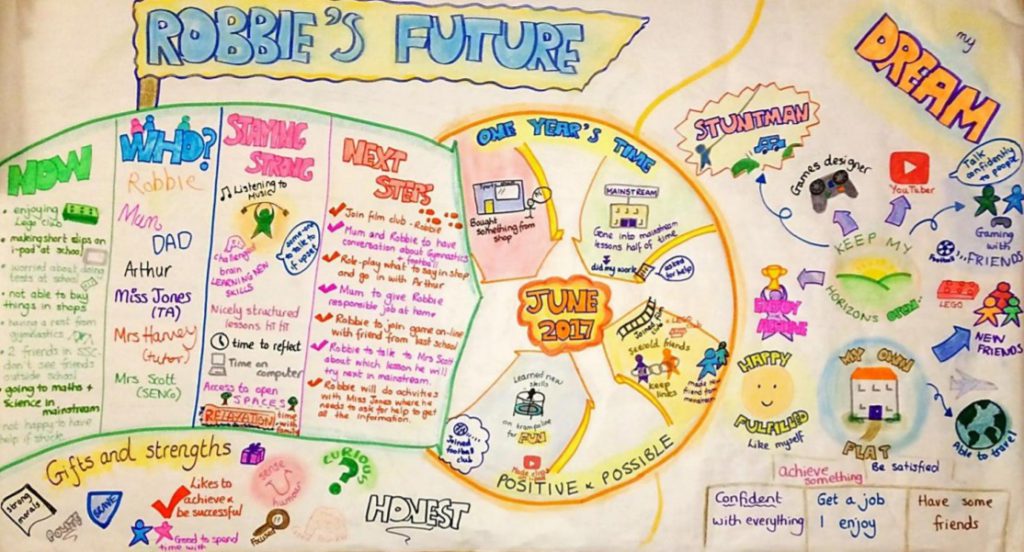Person centred planning is a family of approaches that focus on having a structured conversation with a person or group. The aim of the session is to discover what is most important to the person or group and to agree the opportunities and support required to give them the best chance of experiencing this.
Person centred planning techniques are often creative, can create alliances and help to create a belief that a sense of change is possible.
Some popular examples of creative person centred planning tools are PATHs and MAPs. Both these techniques are ideally delivered by 2 facilitators who generate a graphic which includes a shared vision of a positive future for the person. The process normally takes place with a group of people who know the focus individual well. One facilitator focuses on leading the discussion and the second capturing the conversation as a graphic.
PATH (Planning Alternative Tomorrows with Hope)

A PATH (Planning Alternative Tomorrows with Hope) starts by visualising a person or groups future then works backwards from this vision to plan how it can be brought into being. Research has indicated that the use of a PATH has a positive impact on children and young people’s confidence and motivation in achieving their goals. It is also useful for team and organisational action planning. A PATH is a very positive process, which always looks forward, spending no time on the past or the ‘nightmare.’
West Sussex has worked with Inclusive Solutions to deliver PATH training, the training videos were recorded and can be found on The Local Offer if you would like to see some snippets from the training day.
A MAP (Making Action Plans)
A MAP (Making Action Plans) is a little different from a PATH as it begins with the person’s / group’s story about their history and milestones on their journey to date. The process also provides an opportunity to touch briefly upon worries for the future before moving onto their future. A MAP might be particularly useful at a time of transition when a person’s story may need to be told to new members of the team and their concerns to be voiced.
Some video clips from a MAP training day with Inclusive Solutions can also be found on The Local Offer.
Circle of Friends
Circle of Friends is a technique that is used to support the inclusion of children and young people. Although this is not a person centred planning like a PATH or MAP, the technique does use many of the same techniques. Please see the related page for further information.
Further information on person centred planning.
Further information on person centred tools can be found on the Helen Sanderson Associates website.
Last updated 3 August 2021
 Tools for Schools
Tools for Schools